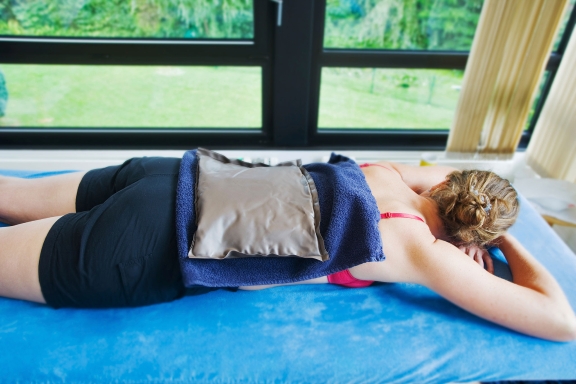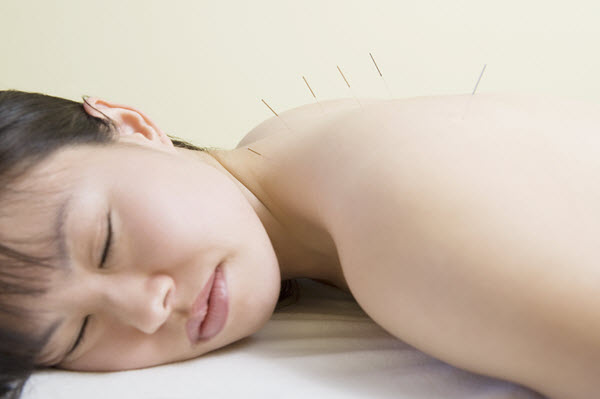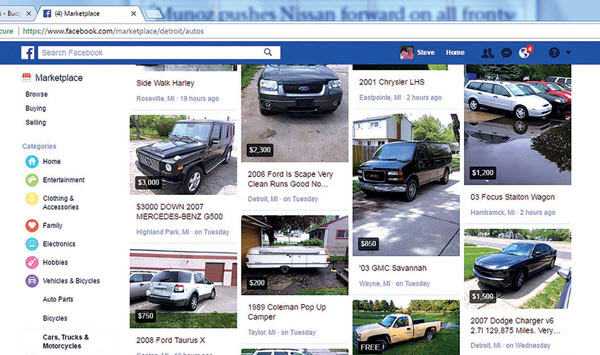 Fifty-five years ago, The New York Review published its first issue. To celebrate the magazine’s emerald anniversary, in 2018 we will be going through the archives year by year, featuring some of the notable, important, and sometimes forgotten pieces that appeared in its pages. That first issue included a short note, addressed To the Reader: “The hope of the editors,” they wrote, “is to suggest, however imperfectly, some of the qualities which a responsible literary journal should have and to discover whether there is, in America, not only the need for such a review but the demand for one.”
Fifty-five years ago, The New York Review published its first issue. To celebrate the magazine’s emerald anniversary, in 2018 we will be going through the archives year by year, featuring some of the notable, important, and sometimes forgotten pieces that appeared in its pages. That first issue included a short note, addressed To the Reader: “The hope of the editors,” they wrote, “is to suggest, however imperfectly, some of the qualities which a responsible literary journal should have and to discover whether there is, in America, not only the need for such a review but the demand for one.”
Month: March 2018
The Smartphone Effect (And Why We’re All Addicted)

 Most of us know the tug of a new SMS message or a notification from Facebook which comes with the ever-present smartphone. But most of us don’t know – until it’s taken away – how powerful that tug really is. I recently left my phone in the Athens airport: for at least a few weeks, I went to sleep without a phone beside me.
Most of us know the tug of a new SMS message or a notification from Facebook which comes with the ever-present smartphone. But most of us don’t know – until it’s taken away – how powerful that tug really is. I recently left my phone in the Athens airport: for at least a few weeks, I went to sleep without a phone beside me.
I was surprised by how potently I felt the difference. The itch to check just one more app became defunct. There were only two choices once in bed – read, or drift off to sleep. No frittering away an hour in the morning or before bed. Usually the resolution to read before bed – which I genuinely love – gives way to watching Husky videos. Even after putting the phone down, smartphones haunt sleep, exciting the brain and sending an explosion of stimuli.

Smartphones and the Brain
Checking your smartphone releases an onslaught of neurotransmitters called dopamine. Dopamine is responsible for desire – not pleasure or reward. The result? The powerful urge to check your phone, without ever feeling satisfied by it.
In 1953, James Olds and Peter Milner, two young scientists at McGill University, implanted electrodes in a rat’s brain. Though they didn’t know it at the time, they had hit on the part of the brain which releases dopamine. They were surprised by the rats’ behavior: the rats appeared addicted to the painful electric shocks the scientists were delivering. (1)

The scientists set up a lever in a rat cage which delivered electric shocks when pressed. Once the rat figured out what the lever did, he gave himself shocks every five seconds until he collapsed from exhaustion. Olds then put levers at opposite ends of an electrified grid so that a rat could only receive one shock at a time. Rats ran back and forth across the electrified grid until their feet were so burnt they couldn’t move.
They couldn’t stop pressing the lever even though they were doing irreparable self-harm.

Scary and unnerving, when we apply it to the seemingly innocuous theme of modern technology. Between Facebook, Twitter, e-mail, and text messaging, we’re bombarded by dopamine-delivery programs nearly impossible to put down. Kelly McGonigal, health psychologist and a pop conduit to scientific research, states:
“There are few things ever dreamed of, smoked, or injected that have as addictive an effect on our brains as technology.” (2)
I love my smartphone, and I believe it adds to my quality of life. I read off my phone, use a piano metronome, keep an easy budget on it, and track my time. But like with every good thing, it’s about limits. Because of the chemical addiction, it’s hard to set a limit with smartphones.
Smartphones and Anxiety
So is it a surprise that dopamine is sometimes linked to anxiety? Scientists have suspected for a long time that too much dopamine is linked to dread. University of Michigan researchers studied what happens to rats when dopamine is blocked from the nucleus accumbens, where emotions including fear are processed. The scientists removed a fear-controlling brain chemical called glutamate; usually, this would have made the rats frenzied and panicked. But, when dopamine was absent, the rats were calm. They came to the conclusion that excessive dopamine is linked to fear, dread, and paranoia. (3)

When I retrieved my cellphone and started sleeping beside it again, my anxiety increased noticeably. Increased heart rate, slight trembling in the fingers, feelings of uneasiness. Maybe it’s because of the barrage of stimulation when the mind should be getting ready for rest. Maybe it’s because it gets rid of the willpower battle to put down the phone, which wears you out. In any case, I’ve been careful ever since to keep my phone out of the room when I got to sleep at night. Try it yourself – you might be surprised!
- http://psycnet.apa.org/record/1955-06866-001
- McGonigal, Kelly: “The Willpower Instinct: How Self-Control Works, Why It Matters, and What You Can Do to Get More Of It.”
- (https://www.scientificamerican.com/article/fear-factor-dopamine/)
You’ve read The Smartphone Effect (And Why We’re All Addicted), originally posted on Pick the Brain | Motivation and Self Improvement. If you’ve enjoyed this, please visit our site for more inspirational articles.
>
As the sun nears the horizon of this huge, high-elevation valley…

As the sun nears the horizon of this huge, high-elevation valley at Great Sand Dunes National Park and Preserve, its intense light shines through soft atmospheric haze – shifting the color spectrum toward crimson. Early explorers were moved by this phenomenon and named this Colorado mountain range Sangre de Cristo, meaning the “Blood of Christ.” Visitors today are also inspired by the vibrant color and light in these mountains, which reach over 14,000 feet! Photo by Patrick Myers, National Park Service.
We have all been hit by difficulties and misfortunes in our lives…
We have all been hit by difficulties and misfortunes in our lives. Very often these difficulties arise because of mistakes we made in the past. Unfortunately, we can’t change the past. We can try to forgive ourselves but the pain lingers on for a long time. The most difficult aspect of mistakes is when we hurt others unintentionally. That’s incredibly painful for those that were hurt and ourselves. There is no simple solution for if there was, this post would not have been written.
If the world were only 100 people, here’s what it would be like
It’s that time of year when baby bald eagles start hatching! 🐣…

It’s that time of year when baby bald eagles start hatching! 🐣 Once on the verge of extinction because of habitat destruction, illegal shooting and contamination of its food source, the bald eagle is thriving today thanks to conservation efforts. Bald eagles live near rivers, lakes, marshes – and on public lands across the country. They mate for life, and typically lay 1-3 eggs from February to mid-April. Both adults incubate the eggs, which hatch about 35 days later, and new chicks keep the parents busy until they can fly from the nest around 3 months old. This year, eaglets have been hatching at Channel Islands National Park in California, the National Arboretum in D.C. and Florida’s Arthur R. Marshall Loxahatchee National Wildlife Refuge (pictured here). Photo by Mark Cook, South Florida Water Management District.
6 Keto Diet Myths You Shouldn’t Be Suckered Into
You’ve probably heard of the Ketogenic diet but you’re too scared to give it a try with all the bad things you heard about it. It’s controversial, scary, and way too confusing for beginners to understand.
But are the rumors true?
To set the records straight and to ensure that you’re fully informed before you give it a try, here are the most popular Keto diet myths finally debunked.
Myth #1: It puts you at risk of heart diseases

Eating a high fat Keto diet can be scary for some people. After all, too much fat is harmful to the heart, right?
Well, no.
The truth is that eating a high fat Keto diet can actually reduce your risk of heart diseases.
How?
When you eat fewer carbohydrates and your intake of saturated fat is increased, the metabolic markers for heart disease risks improve.
Your blood glucose levels will drop which can reduce glycation and its negative effects on the body. Your triglycerides, insulin levels, and lipoprotein get reduced while your HDL cholesterol levels improve.
And you know what else?
A high fat Ketogenic diet can also provide your body with more vitamin D, selenium, copper, and magnesium which are all great for the heart.
See Also: 10 Habits That Can Prevent Heart Disease
Myth #2: You can eat all types of fat
While eating a high fat ketogenic diet won’t be that bad for the body, it doesn’t mean that you can eat any type of fat.
If you’re thinking of loading your diet with ham, sausages, and loads of fried foods, then you’re totally on the wrong track.
If you want to get the most out of this diet, consider replacing saturated fat with unsaturated fats. Think of oily fish, flaxseed, and walnuts.
You can also incorporate more extra virgin olive oil and fatty fish into your diet. Nuts are great, too.
Myth #3: You won’t have a hard time adjusting to Keto
Transitioning into ketosis can cause some uncomfortable experiences. You may have to deal with digestive issues, sleep-related problems, and fatigue during the first few weeks of changing your diet and lifestyle.
Also known as the Keto flu, those side effects are common and will typically go away after a few weeks. You can make them less uncomfortable by drinking more water and eating more foods rich in fibers and electrolytes.
This, however, shouldn’t scare you. Although Keto-flu is normal, it doesn’t mean that every person who goes on a Keto diet will have the same problems. There are people who experience way less issues during their transition.
Myth #4: It causes extreme dehydration
A ketogenic diet doesn’t have to cause dehydration if you know what to do.
Consuming less carbohydrates than usual can affect the way your body deals with water and electrolytes. This can make it easier for dehydration and electrolyte imbalance to happen.
Imagine this:
When you go on a keto diet and you cut back on your carbs, your body is forced to produce less insulin than usual. This means your glycogen stores will decrease.
As that happens, your kidneys start excreting more water. And as your body flushes out water, you lose essential electrolytes and minerals, too.
As your body loses a great amount of electrolytes, your heartbeat will become irregular, your energy becomes low, and your body temperature control becomes less effective.
So, how do you prevent those things?
Drink more water and consume a lot of teas, broths, and soups. Eat foods rich in sodium, magnesium, and potassium, too. They can help replenish your body’s lost electrolytes.
See Also: Top 5 Tips On How To Stay Hydrated
Myth #5: It’s good for your mental health
Keto diet requires a lot of discipline and commitment. Naturally, you’d think that it’s great for boosting your mental health.
The truth, however, is that Keto diet can affect the brain negatively during the new fat-burning stage. You’ll be more irritable and less focused than usual.
This is because your body and brain are starting to look for glucose which is its main source of energy. Your brain needs about 100g of carbohydrates a day to ensure your brain’s optimum function. In comparison, you can only get about 50 grams of it when you’re in Keto.
Take note that those effects are only temporary. They will pass and go away on their own but it can take weeks or months to happen.
The other side of the coin is that a lot of keto dieters rave about their newfound focus and clarity. They attribute this to the decrease of carbohydrates that the body processes.
Myth #6: Keto won’t let you exercise

When you’re on a Keto diet, it’s normal for your body to feel less energized during your exercise. This is because you get less carbohydrates which, like your brain, your body needs as fuel for such activities.
This doesn’t mean that you can’t exercise.
You can continue your workout routine even if you changed your diet. You just need to make sure that you’re giving your body enough calories and a lot of fat to support your routine. Don’t forget to provide ample time for recovery in between routines, too.
If you’re still having issues with being active, try a modified Ketogenic diet. It’s more flexible than going complete Keto.
You can also try taking supplements but be sure that they’re safe. Do your homework first and really get to know your options. Remember, not all Keto supplements are the same.
Try to find and study guides online, like this KetoDrive review. Use them in deciding which ones will safely meet your needs.
In Conclusion
Keto diet is effective whether you’re trying to lose weight or you just want to lower your bad cholesterol and risk of heart diseases. However, although effective, it doesn’t mean that it’ll work for you right away.
Changing your diet can affect your overall health. This means experiencing a few unwanted side effects, like less energy and mental clarity, as your body gets used to the changes.
Take note that those side effects don’t mean that Ketogenic diet is bad or that it’s not working for you. Your body just needs time to adapt your new diet. Give it a few weeks or months and your body should be able to see why many people are talking about the benefits of the keto diet.
Remember that the bottom line is always your health. You don’t need to follow or stick to a diet for the sake of being on one. Always listen to your body, make a lifestyle change of what works best for you, and don’t be afraid to make adjustments as needed.
The post 6 Keto Diet Myths You Shouldn’t Be Suckered Into appeared first on Dumb Little Man.
5 Best Tips for Back Pain Relief
Pain isn’t just a discomfort. It can also be a sign that something’s wrong with your body.
If you ignore it and if you fail to do something about it, your body can end up hurting for days, weeks, and even months. And that’s really bad for your overall health.
To help you get rid of the pain on your back, here are the best and most effective tips you can use.
Apply ice and heat

This works like a charm for back pain. By applying ice, you’ll be able to temporarily block the pain signals. You’ll be able to relieve swelling, too.
Now, if you don’t have an ice pack, you can use a bag of frozen corn or peas. Wrap it in a towel and lay it on the affected area for about 20 minutes. Do this several times a day.
About 48 hours after, apply moist heat to the affected area. This is to enhance blood flow and lessen those painful spasms.
Dip your towel in warm water and wring it out. Fold it and flatten it on the affected area. You can make this step a lot easier by lying on your stomach and placing pillows under your ankles and hips.
Leave the warm towel on your back for about 20 minutes and repeat three to four times a day.
Check your posture
Poor posture can put a lot of stress on your back. It increases your risk of having problems in your joints, muscles, and discs. It can even lead to the anatomical changes in your spine over time.
Improving your posture when you’re so used to being in a hunched position can take a lot of discipline and work. While you are still working on that, you can try a few exercises to reduce posture-related back pain.
For one, you can try the upper-body stretch. It’s really easy to do.
You only need to face a corner and stand with your arms raised. Put your hands flat on the wall with your elbows at the height of your shoulders.
Place one foot in front of your other foot and slowly bend your knee. While exhaling, lean your body in the direction of the wall. Keep your back and chest straight and hold the position for about 20 seconds.
Imagery can also help. Simply imagine having a line running through your body. Imagine your shoulders, knees, ankles, ears, and hips aligned with that vertical line.
Change your mattress

If you’re still using a mattress with unyielding coils, it’s probably the right time to rethink your mattress. Really old, saggy beds should make you think twice, too.
You see, when your mattress is already sagging, it means that it doesn’t have adequate support anymore. It can leave your back painful and stiff in the morning.
When choosing a new mattress, it’s best to consider your sleeping position. This is to ensure that your body will have the right kind of support to relieve unnecessary pressure.
Check for the comfort it provides, too. Softer mattresses are best for people who don’t really need too much support. If you sleep on your back and your body needs a lot of support, go for firmer mattresses.
Get a bed that’s the right size for you. The last thing you want to happen is to feel cramped and crowded in your own bed.
See Also: 3 Negative Effects of Bad Mattresses You Need To Be Aware Of
Try acupuncture

Back pain is one of the most common reasons why people consider getting acupuncture and it’s proven to be really effective.
There are several theories on how acupuncture relieves back pain.
One is that it changes the brain chemistry by affecting the release of certain neurohormones and neurotransmitters in the brain. Those two affect nerve impulses and the activity of certain organs in your body.
Another theory involves the release of natural opioids. Acupuncture can trigger the release of your body’s natural painkillers to reduce the experience of pain.
Take note that acupuncture may not be the best solution for you if you have any implant or if you wear a pacemaker. Be sure to tell your doctor about it and any other medications you are taking to avoid negative reactions.
Pop a pill

If you really need a fast-acting solution or if you can’t wait for the other remedies’ effects to take place, then just pop a pill. There are several pain medications that can ease your back pain.
One of your best choices is Naproxen. It can reduce inflammation and pain in your muscles and joints. You can buy it even without a prescription.
Even though it doesn’t require a prescription, it doesn’t mean that anyone can take it. If you are allergic to anti-inflammatory medicines or if have stomach ulcers, blood clotting disorder or high blood pressure, talk to your doctor first.
In using Naproxen tablets, make sure to take it with a meal to reduce its effect on your stomach. As much as possible, take the lowest dose for the shortest period of time.
Look out for its most common side effects, like headaches, changes in vision, dizziness, and confusion. Rashes, ringing in the ears and tiredness are also common to people taking Naproxen.
In Conclusion
Pain is more than just a discomfort. It can also be a reflection of your health.
If you wait for it to go away on its own, you can end up with a lot more problems. You can lose weight, experience mood swings, and face depression and anxiety. Your mental health can suffer as well as your lifestyle and finances.
This list of tips for back pain relief is just to help you lessen the discomfort you are experiencing. It’s not meant to treat any existing health issues you are experiencing.
Remember that it’s still best to consult your doctor, get a proper diagnosis, and be given the right treatment if you want to end your back pain for good.
The post 5 Best Tips for Back Pain Relief appeared first on Dumb Little Man.
The B&N Podcast: Uzodinma Iweala

Every author has a story beyond the one that they put down on paper. The Barnes & Noble Podcast goes between the lines with today’s most interesting writers, exploring what inspires them, what confounds them, and what they were thinking when they wrote the books we’re talking about.
When Uzodinma Iweala’s first novel Beasts of No Nation was first published, readers were astonished to discover such a powerful rendering of the world of a West African child soldier could come from a writer making his debut. He followed with Our Kind of People, an equally unpredictable nonfiction work about the global AIDS crisis. Now, Uzodinma Iweala has returned to fiction with the story of a Nigerian-American teen who takes a friend into confidence — setting off life-changing consequences for them both. Speak No Evil is being called one of the must-reads of 2018; in this episode, the author talks with Miwa Messer about this shattering new tale.
In the long-anticipated novel from the author of the critically acclaimed Beasts of No Nation, a revelation shared between two privileged teenagers from very different backgrounds sets off a chain of events with devastating consequences.
On the surface, Niru leads a charmed life. Raised by two attentive parents in Washington, D.C., he’s a top student and a track star at his prestigious private high school. Bound for Harvard in the fall, his prospects are bright. But Niru has a painful secret: he is queer—an abominable sin to his conservative Nigerian parents. No one knows except Meredith, his best friend, the daughter of prominent Washington insiders—and the one person who seems not to judge him.
When his father accidentally discovers Niru is gay, the fallout is brutal and swift. Coping with troubles of her own, however, Meredith finds that she has little left emotionally to offer him. As the two friends struggle to reconcile their desires against the expectations and institutions that seek to define them, they find themselves speeding toward a future more violent and senseless than they can imagine. Neither will escape unscathed.
In the tradition of Junot Diaz’s The Brief Wondrous Life of Oscar Wao and Chimamanda Ngozi Adichie’s Americanah, Speak No Evil explores what it means to be different in a fundamentally conformist society and how that difference plays out in our inner and outer struggles. It is a novel about the power of words and self-identification, about who gets to speak and who has the power to speak for other people. As heart-wrenching and timely as his breakout debut, Beasts of No Nation, Uzodinma Iweala’s second novel cuts to the core of our humanity and leaves us reeling in its wake.
Discover more of Uzodinma Iweala’s books.
Like this podcast? Subscribe on iTunes or Stitcher to discover intriguing new conversations every week.
Photo of Uzodinma Iweala (c) Caroline Cruse.
The post The B&N Podcast: Uzodinma Iweala appeared first on The Barnes & Noble Review.
The Barnes & Noble Review https://ift.tt/2pRWivj
What to Write When Selling a Car Privately
You and your car have traveled a lot of miles together, but you’ve decided it’s time for a change. Selling your car online privately often brings more cash to your wallet than using it as a trade-in for a new vehicle.
But do you know what to write when selling a car privately?
Follow these tips and you can easily attract the attention of potential buyers and sell your vehicle quickly.
Include the Basics

When writing your ad, include all the necessary information. It should include:
- Year made and model
- Interior and exterior color
- Mileage
- Engine size
- Automatic or manual transmission
- Fuel type and miles per gallon
- Existing warranty information
Explain Why You are Selling
Add a personal touch to your ad by including why you purchased the vehicle in the first place and why you are selling. If your car is so worthy of purchasing, a buyer will want to know why you are selling it.
Good reasons might be that you need a bigger vehicle for your growing family or your children are getting older and bigger. Apart from your reasons, you may even include a personal story of how the car has served you and your family over the years.
Highlight the Positives
Think of anything that could add value to the vehicle and include it in the description.
You can disclose if the vehicle has never been in an accident. You should also state if you have the detailed records of all its maintenance and repairs throughout the years.
Be sure to include any modifications you’ve made that add value to your car. It can be a set of upgraded wheels, a roof rack, a trailer hitch, floor mats, a new sound system or even window tint.
Use Concise Language
Avoid overly-descriptive sentences or sentences with a lot of fluff. You should also avoid jargon.
You may appreciate the double wishbone suspension but others may just want to know if the vehicle rides smoothly on long trips.
Honesty is the Best Policy
Describe the car as honestly as possible because that’s what most buyers want when searching for a used car to purchase. Include any scratches or dings on the exterior as well as any stains on the carpet or rips in the upholstery. Note any issues you’ve had recently. It’s also a good idea to disclose if you’ve used any after-market parts on the vehicle.
Don’t try to oversell the vehicle and describe it as perfect. If you’ve been dishonest with any part of the description, then chances are they will doubt the other things you’ve said about your car.
Include Photographs
Take plenty of pictures of both the inside and the outside of the vehicle. The images should be clear and of good quality.
Excellent photos make it easy for potential buyers to imagine themselves in the driver’s seat and using the car on a regular basis. Zoom in on any imperfections or damages to show you have nothing to hide and to let potential buyers know exactly what they’re purchasing.
Provide Some Wiggle Room
Consider the amount of money you are looking to get for your vehicle and list the car on the top end of your range. Doing so lets prospective buyers know that you’re willing to negotiate its price.
Before placing your ad, know exactly how low you’re willing to let your car go for.
Review the Ad for Mistakes

It’s not enough that you know what to write when selling a car privately. You also need to make sure you write your ad flawlessly.
Before posting your ad, read it a few times for spelling and grammar mistakes. Write the ad in a word processing program that checks for spelling. It may help to get someone else to proofread the ad to catch anything you’ve missed. An ad riddled with misspelled words and mistakes can be hard to read and may look unprofessional.
Gather as much information about your vehicle as you can and write a compelling ad that will make your car stand out. Include all essential information and anything special about the car that you feel offers value to a potential buyer.
Add a personal touch that others can relate to and use pictures that highlight your vehicle’s best side. Give potential buyers everything they need to make an informed decision to choose your vehicle over others on the market.
The post What to Write When Selling a Car Privately appeared first on Dumb Little Man.






